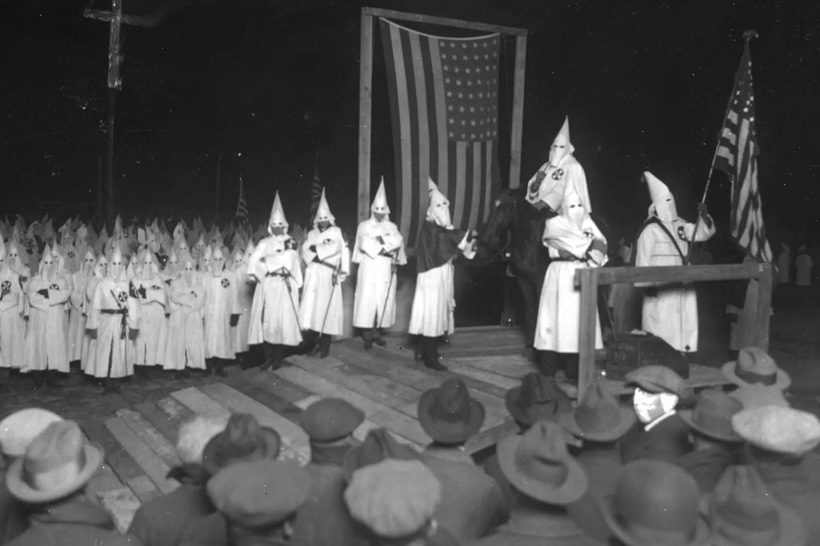The Rise and Fall of a Grand Dragon of the Ku Klux Klan
In a new book, Timothy Egan traces the Klan’s expansion in the 1920s across American political and civic life. Then its leader, David C. Stephenson, committed murder.
The scene, in some ways, could not have been more commonplace. On July 4, 1923, in a creekside park in Kokomo, Ind., families celebrated Independence Day with flags and bunting, watermelon and pie, patriotic songs, a parade. Commonplace — except that these families, many thousands in number, wore the white hoods and robes of the Ku Klux Klan. Banners insisted that “America is for Americans”; floats portrayed Klansmen defending women from Black people and Catholics. As the day’s featured speaker — David C. Stephenson, Grand Dragon of the Realm of Indiana — stepped out of the rear cockpit of a Klan-branded biplane, members of the crowd dropped to their knees and, in rapture, reached out their arms. “My worthy subjects,” Stephenson exulted.
D.C. Stephenson, the central figure in the Klan’s expansion across the American Midwest of the 1920s, its chokehold on civic life and political power, and its ultimate collapse, is the focus of “A Fever in the Heartland,” a powerful new book by Timothy Egan. The Grand Dragon’s tale is not untold: Over the past century it has attracted both scholarly and lurid interest. But Egan, the former New York Times columnist whose 2006 book on the Dust Bowl, “The Worst Hard Time,” won a National Book Award, writes with brisk authority and an eye for the vivid, and unsettling, detail. There are many in this book, which reads at times like a screenplay for a crime procedural, at others like a horror film.
